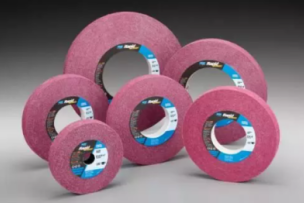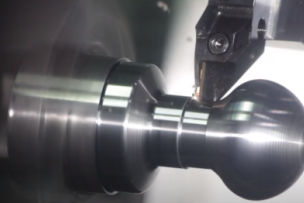This article was updated on Tuesday, Feb. 25, 2025.
Injection-molded LEGO bricks, invented shortly after World War II, boast an accuracy of 0.005 mm (0.0002 inch). The tools used to make them are even more accurate.
According to Tom Houle, a director at Matsuura Machinery USA and someone who’s spent his entire career around plastics and moldmaking, they’re the most accurate in the world.
It goes without saying that Houle is a huge fan of all things plastic, and with that comes huge respect for the machine tools needed to make the plastic building blocks, electrical discharge machining (EDM) equipment chief among them.
While Houle concedes that some of the playthings’ precision is due to a far newer technology—metal additive manufacturing (3D printing), which creates the conformal cooling channels that moldmakers use to greatly increase throughput—EDM plays a role even in that.
Aerospace and other industries often use wire EDM (WEDM)—a machining process that uses an electrically charged brass or coated copper wire to create the sparks that erode material from a workpiece—to slice 3D printed parts away from the build platform. Think of it as a highly accurate bandsaw.
[hed2] Taking on Part Complexity
One example comes from EDM Network in Illinois, where owner Ron Vogel touts his company’s line of “Fast Wire EDM” equipment.
He says these machines are less dependent on the high-pressure dielectric—typically deionized water or a special nonconductive oil—used to flush EDM-generated debris from the bottoms of 3D printed workpieces, making the process several times faster than traditional WEDM in the unfavorable conditions common with 3D printed part removal.
A similar success story comes from GF Machining Solutions USA, where the head of business development, Eric Ostini, discusses how modern spark generator technology eliminates the recast or “white” layer on metal subjected to EDM.
These layers have been a focus among practically all machine manufacturers for decades, a concern that’s especially relevant to the aerospace industry, where recast metal is synonymous with the micro-cracks that spell premature component failure.
WEDM and EDM more generally (which includes conventional or “sinker” EDM, as well as EDM hole drilling machines) bring an additional benefit to the aerospace industry, too: their ability to handle part complexity.
As LEGO Corp. and countless other injection molding companies have found, there are few shapes that sinker EDM can’t produce.
So it is with the “fir tree” forms common to jet engine manufacturers, who have long used expensive broaches to cut these geometries. The days of that system’s dominance are probably numbered.
EDM vs. Broaching
“Wire electrical-discharge machining (EDM) is highly accurate and consistent, and analysis shows that the cost of the wire EDM process by a machine dedicated to aerospace part processing is neck and neck with that of broaching while maintaining similar productivity levels,” Ostini says.
Thanks to recent generator improvements, part quality is also admirable. Mike Bystrek, national wire EDM product manager at Mitsubishi distributor MC Machinery Systems Inc., has said that whatever the material, the company’s application engineers have developed cutting conditions that provide “the best machine performance, surface finish and part accuracy in the shortest amount of time and with the lowest water consumption possible.”
Machine usability and maintenance have also improved significantly since the late 2010s.
William Burba, technical sales director for FANUC EDM at Massachusetts-based Methods Machine Tools Inc., notes that features like a job interruption function that allows users to pause a WEDM job mid-burn, process a different part, and then come back to the original job later can be a huge asset amid manufacturing’s shortage of skilled labor.
“In addition, we’ve added to our macro-based programming capabilities and introduced a setup guidance feature that flags potential operator errors, along with a 3D coordinate system rotation function that’s being used extensively by the medical, tool and die, and recreational firearms industries, all of which help simplify setup,” Burba says.
FANUC redesigned its upper and lower heads to simplify the wire connection reassembly process, he adds, while also making it possible for operators to use 3D printing to create custom flushing nozzles for challenging workpiece shapes.
And for shops wishing to pursue a lightly attended or lights-out operation strategy (a capability for which EDM is very qualified) the control now features a “core stitch” function to keep parts and large debris from falling through the workpiece blank during machining, possibly damaging the lower head as they pass.
What Are Common EDM Methods?
There are three distinct types of this rapidly advancing technology: Wire EDM, also called “WEDM”; EDM hole drills and conventional, or “sinker,” EDM. All are able to machine everything from aluminum to carbide, provided the material is conductive. One key difference, however, is the electrode, which can be thought of as a cutting tool.
Wire EDM
WEDM uses a spool of copper or brass alloy wire that is continuously fed through the workpiece. Typical wire diameters range from .004 inch to .012 inch, although wires down to .0006 inch are available. WEDM is widely used in the tool and die industry, and for cutting small slots and similarly difficult features in medical components.




